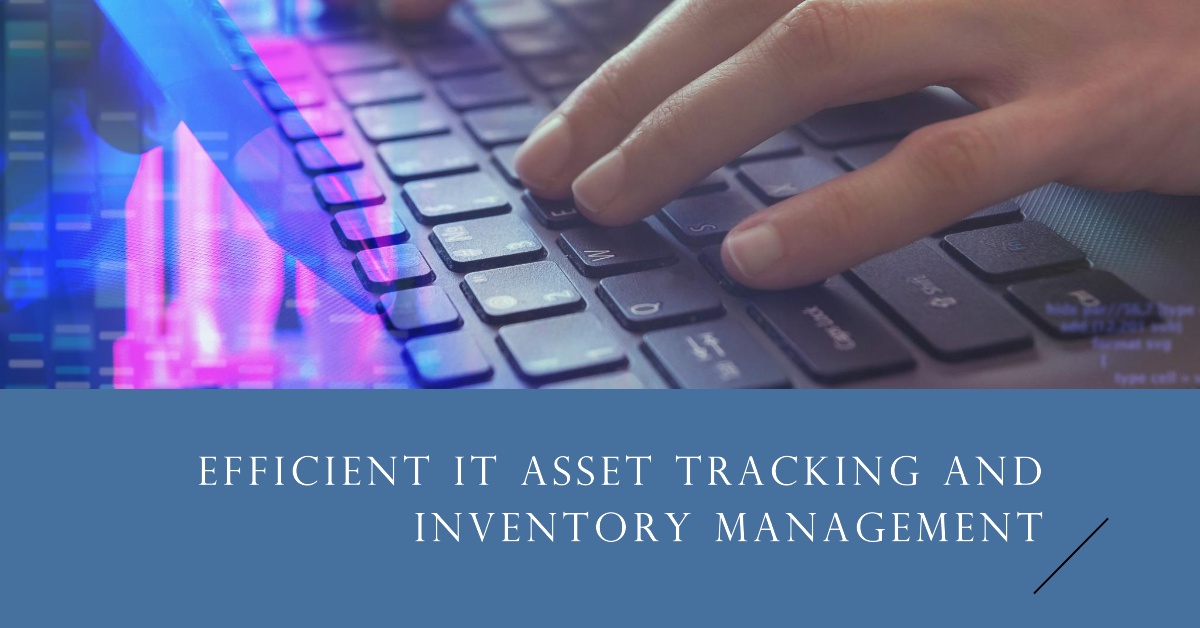In today's digital age, efficient IT asset tracking and inventory management are critical for businesses of all sizes and industries. As organizations rely on technology to streamline their operations and drive growth, they must also recognize the need for robust management solutions. This is where managed services come into play. By outsourcing IT asset tracking and inventory management to a reliable service provider, businesses can benefit from various advantages while alleviating the burden on their internal teams.
Understanding Managed Services in IT
Managed services refer to outsourcing specific IT functions to external providers. These providers, known as Managed Service Providers (MSPs), assume responsibility for managing and monitoring the designated IT services, ensuring they operate smoothly and efficiently. Managed services provide businesses with a cost-effective alternative to maintaining an in-house IT department, enabling them to leverage the expertise and resources of MSPs.
The Role of Managed Services in IT
The primary role of managed services in IT is to enhance organizations' operational efficiency and effectiveness. By entrusting key IT functions, such as asset tracking and inventory management, to dedicated professionals, businesses can focus on their core competencies while leaving the complexities of IT management to the experts. This allows for better resource allocation, improved productivity, and reduced operational costs.
Key Features of Managed IT Services
Managed IT services encompass a range of features that support efficient asset tracking and inventory management. These include:
- Real-time monitoring: MSPs employ advanced real-time monitoring tools to track and manage IT assets and inventory. This enables businesses to maintain an accurate and up-to-date record of all their technological resources.
- Proactive maintenance: Managed service providers take a proactive approach to IT management by performing regular maintenance, applying security patches, and addressing potential issues before they escalate.
- Data security: Reliable MSPs implement robust security measures to protect sensitive business data and ensure compliance with regulatory requirements.
- Scalability: Managed services offer businesses the flexibility to scale their IT resources up or down as needed, accommodating changes in demand or business growth.
The Importance of IT Asset Tracking
Effective IT asset tracking is essential for maintaining control over technology investments, optimizing resource utilization, and ensuring compliance with licensing agreements. IT assets, such as hardware, software, and networking equipment, represent significant investments for businesses. Without proper tracking, organizations can face a range of challenges and inefficiencies.
Benefits of Efficient IT Asset Tracking
Efficient IT asset tracking provides organizations with several benefits, including:
- Improved budget management: By accurately tracking IT assets, businesses can better allocate resources and forecast future technology requirements, reducing unnecessary spending.
- Enhanced productivity: With a comprehensive view of their IT assets, organizations can quickly locate and deploy resources, minimizing downtime and boosting productivity.
- Compliance adherence: IT asset tracking ensures organizations remain compliant with licensing agreements and regulatory requirements, avoiding penalties and legal issues.
- Risk mitigation: Tracking assets helps in identifying vulnerabilities and potential security risks, allowing organizations to implement necessary measures to mitigate them.
Challenges in IT Asset Tracking
While IT asset tracking offers numerous benefits, organizations may encounter challenges along the way:
- Scale and complexity: The larger and more complex an organization's IT infrastructure, the more challenging it becomes to track and manage assets effectively.
- Manual processes: Relying on manual processes without proper automation can lead to human errors, inaccuracies, and delays in asset tracking.
- Shadow IT: The prevalence of shadow IT, where employees use unauthorized software or devices, can make it difficult for organizations to maintain a comprehensive inventory and track all assets.
Exploring Inventory Management in IT
In addition to asset tracking, effective inventory management, including Managed IT Services Columbus Ohio, is crucial for ensuring organizations have the right technology resources when they are needed. This involves maintaining an accurate and up-to-date inventory of all IT assets, including hardware, software licenses, and peripherals.
The Need for Effective Inventory Management
Effective inventory management offers several advantages:
- Cost control: With proper inventory management, businesses can avoid overspending on redundant or unnecessary technology resources.
- Minimized downtime: By keeping track of inventory levels, organizations can ensure they have sufficient spare parts and replacement equipment to minimize downtime in case of failures.
- Optimized resource allocation: Accurate inventory data enables businesses to allocate IT resources effectively, ensuring they are utilized where they are most needed.
Strategies for Streamlining IT Inventory Management
To streamline IT inventory management, organizations should consider implementing the following strategies:
- Centralized inventory system: Utilizing a centralized inventory management system helps capture real-time information about IT assets, making it easier to track, manage, and maintain accurate records.
- Automated asset discovery: Leveraging automated tools that can scan the network and discover connected IT assets helps organizations maintain an up-to-date inventory without relying solely on manual data entry.
- Regular audits: Conducting routine audits and physical checks of IT assets ensures the accuracy of inventory records, identifies discrepancies, and reduces the risk of asset loss or theft.
Integrating IT Asset Tracking and Inventory Management
The integration of IT asset tracking and inventory management is crucial for achieving comprehensive visibility and control over an organization's technology resources. By combining these two functions, businesses can streamline their operations, enhance decision-making, and maximize the value of their IT investments.
The Interplay between Asset Tracking and Inventory Management
Asset tracking and inventory management are closely interconnected. Effective asset tracking provides organizations with the data needed to maintain an accurate inventory, while inventory management ensures that the information in the inventory system aligns with the physical assets on hand.
Leveraging Managed Services for Integration
Managed service providers play a crucial role in integrating IT asset tracking and inventory management. They bring the expertise, experience, and technology required to seamlessly connect these functions, ensuring accurate data synchronization and providing organizations with a holistic view of their technology landscape. With the right managed service provider, businesses can optimize their IT operations and achieve greater efficiency and control over their assets and inventory.
Selecting the Right Managed Service Provider
When considering managed services for IT asset tracking and inventory management, it is essential to choose the right service provider. The following factors should be taken into account:
Factors to Consider When Choosing a Provider
When evaluating potential managed service providers, consider the following factors:
- Experience and expertise: Look for a provider with a proven track record in IT asset tracking and inventory management, preferably within your industry.
- Range of services: Ensure the provider offers the specific services and solutions you require, such as real-time asset tracking, inventory reporting, and proactive maintenance.
- Scalability: Consider the provider's ability to scale their services alongside your business needs, accommodating growth and adapting to changing requirements.
- Data security: Verify the provider's data security measures, ensuring they align with your organization's requirements and industry standards.
- Support and responsiveness: Assess the provider's level of support and responsiveness, ensuring they can address any issues or concerns promptly.
Evaluating the Capabilities of a Managed Service Provider
To make an informed decision, evaluate a managed service provider's capabilities through:
- References and testimonials: Seek feedback from existing clients to gauge their satisfaction with the provider's services and support.
- Service level agreements (SLAs): Review the SLAs offered by the provider to understand their commitment to performance, uptime, and issue resolution.
- Demonstrations and proof of concept: Request demonstrations or a proof of concept to assess the provider's technology, ensuring it meets your specific requirements and expectations.
By carefully considering these factors and evaluating the capabilities of managed service providers, organizations can make a well-informed decision that aligns with their unique needs and goals.
Conclusion
Managed services for IT asset tracking and inventory management provide businesses with a strategic advantage in today's technology-driven world. By partnering with the right managed service provider, organizations can optimize their operations, reduce costs, and enhance productivity. From efficient IT asset tracking to effective inventory management, leveraging the expertise of MSPs allows businesses to focus on their core competencies while leaving the complexities of IT management to the professionals. Remember to weigh the factors and evaluate the capabilities of potential providers to ensure a successful partnership that delivers value and supports your organization's growth.


No comments yet